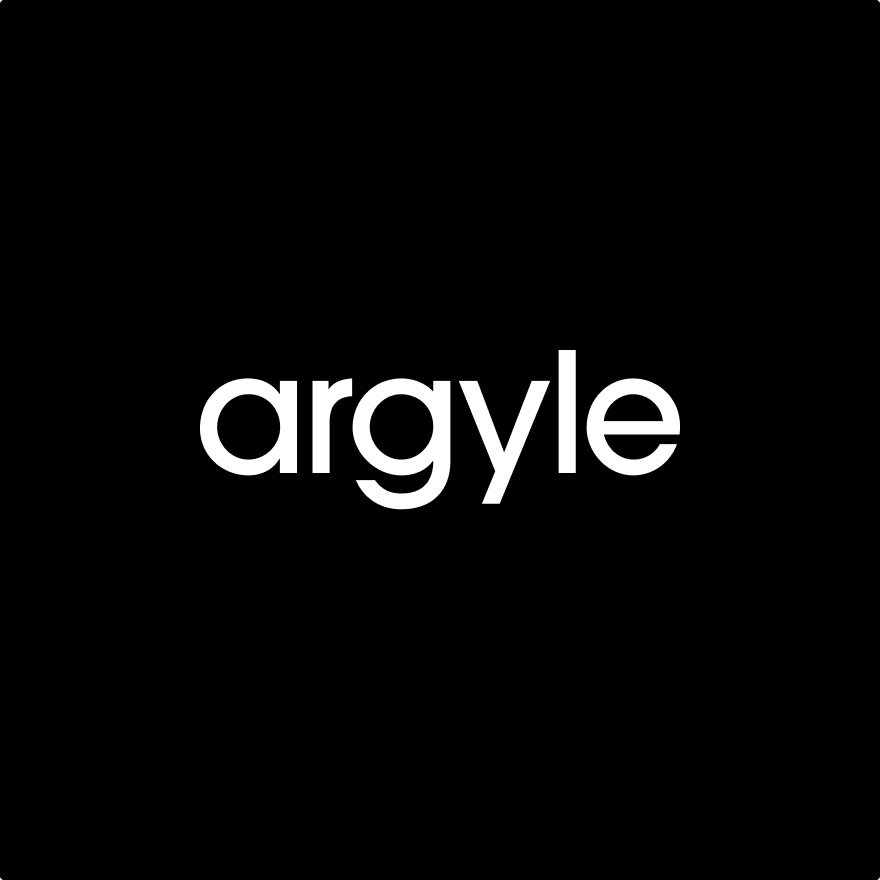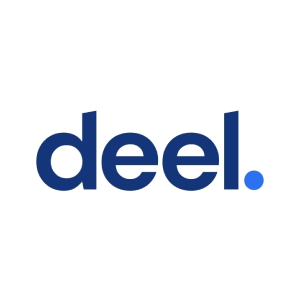Kurtis Lin, CEO of Pinwheel, on the rebundling of payroll into every app
 Walter Chen
Walter Chen

Background
Kurtis Lin is the CEO and co-founder of Pinwheel. We talked to Kurtis to learn more about direct deposit switching, universal APIs in fintech, and the battle between neobanks and vertical fintechs to own the next generation of consumer wallets.
Questions
- Could you start by talking a bit about Pinwheel and what inspired you to build it?
- Can you talk a little bit more about the incumbent company, Equifax, who are one of the leaders in employment and income verification? What’s their model? How has it changed over the last five years that led to the opportunity for you to create Pinwheel?
- You've talked about real-time versus static, and reducing friction and paperwork through digitization. But you also talked about data quality—can you talk more about data quality and the depth of data you can get from a payroll system, versus what you might get from Equifax or something similar?
- Currently, there's a lot of activity in the payroll API space. Can you talk about tailwinds in general that you see for the payroll API sector? What's behind this unbundling of payroll and rebundling it into every app?
- On the inequity point, are there Pinwheel customers that you would point where the company basically wouldn't exist without Pinwheel?
- On that point, just to help folks understand, Pinwheel does read and write?
- We’ve talked about the Plaid comparison, and one of the things that comes up a lot is how, early on, Plaid had to deal with uncooperative banks and they had to scrape data. Are payroll providers cooperating with this because it makes their data more interoperable?
- Can you talk about how you see the core technology? What is the core technology that you've built and how do you think about your core competency with respect to that?
- Truework is also launching an API product. Can you help folks understand the advantages and drawbacks of starting off as an API company versus being an employment income verification company that’s launching an API?
- How do you guys position against Atomic, Argyle and also Plaid, which is obviously getting into this space? What's your thesis on what it'll take to win and why?
- What stops the competitors from becoming CRAs like you are?
- One of the challenges of API companies is finding the right company at the right time and selling into a specific use case when you have a broad based platform. In that sense, how do you think about go-to-market and sales? What's worked for you? How do you get on the roadmap when there’s a lot of stakeholders and competing initiatives that need to get done?
- One of the things that you've mentioned repeatedly is this philosophy around employees owning their own data. Is that something that’s a bright line that would prevent you or make you not want to go into the space of a company like Finch, which is employers connecting company-wide data into tools that help underwrite company loans or company FP&A? With the underlying technology, presumably there's a lot of overlap.
- Speaking in general about TAM expansion opportunities and upside opportunities, direct deposit is a force that’s flying under the radar. For a neobank operator, being able to get a customer to switch their direct deposit from a traditional bank into their new app is important. Can you talk about how much of an enabler this is for the vertical finance and neobank type companies, in terms of pulling companies away from competitors and also frictionless onboarding into a new app experience?
- Are Pinwheel's opportunities geographically constrained? What do you think about moving into the international space?
- When we talk about unbundling and rebundling, it was interesting to hear you describing the flow of funds with the payroll system at the top. A lot of these vertical SaaS companies, if they're going to embed payroll, might do so using a company like Check. Does the existence of a company like Check threaten this vision of the long tail of payroll, because they would also be both embedded payroll provider and then their own data API?
- If everything works really well for Pinwheel over the next five years, what do you become and how is the world different as a result of your existence?
Interview
Could you start by talking a bit about Pinwheel and what inspired you to build it?
In the simplest words possible, what we do at Pinwheel is connect sources—that we would broadly call income data—with the banks, lenders, and fintechs that need information around who someone is, how much money they make, and where they work to either enhance existing products or build entirely new ones.
It’s a really powerful thing, because if you think about the last time you refinanced your home or applied for anything around like a credit card, a mortgage, or a rental apartment, you probably had to download your pay stubs, your W-2s, and all these paper docs just to verify who you are and that information. It's crazy that in 2022 that’s still the primary way that this stuff happens. And it's because those pipes don't exist.
The thesis is quite simple. When you look at the first wave of fintech, what we call fintech 1.0, many people credit Plaid as being the progenitor of this first wave, for companies like Venmo, Robinhood and Coinbase etc—they couldn't exist without Plaid and the data they provide.
We see ourselves as a catalyst for what we call fintech 2.0, or that next wave of financial innovation. The reason why we know this to be true and why we have such high conviction in this thesis is that when we came out of stealth in June of 2020, we had no PR strategy. Literally, we pinged our friends at TechCrunch and said “Please write an article. We need leads. We need people to know us.” They were like, “All right, stop bothering us and we'll write an article.”
They pushed this article out, and in the first 72 hours, we had 133 organic inbounds from Chase, BOA, Wells Fargo, Citi, SoFi, Credit Karma, LendingClub, PayPal, Square—every single large financial institution (FI) or fintech reached out. And we were like, “Holy shit.” What it made us realize is that our initial thesis was actually very myopic.
We thought we were building a better Equifax. Income and employment verification is a big market with a big TAM. It’s a really healthy, high-margin business. We were just going to build it cheaper and better.
As we went deeper, we realized that when you look at the 5-10 year roadmaps of these really big FIs and the biggest fintechs—companies at the forefront of innovation—more than half of all the really big bets that they want to make fundamentally cannot exist without our platform: either the data that we're unlocking or the access to paychecks that we enable. Once that became clear, we were like, “Oh, the true thesis is that we’re the platform that’s creating the building blocks of the future of the financial system.”
It’s completely rethinking how credit works by doing things like real time underwriting versus having to do things in a black box snapshot. It's enabling earned wage access—true earned wage access—because you can see how much someone's making in real time, and we can see when someone's clocked in and clock out of their shift, etc, and combine that with the ability to intelligently route their paycheck. We can do things like carve out X percent to go to this brokerage account, Y percent to go to this high-yield savings account, and Z to go pay off this loan. We can intelligently route all of it. So there's limitless use cases that can be enabled with the platform we’re building.
Can you talk a little bit more about the incumbent company, Equifax, who are one of the leaders in employment and income verification? What’s their model? How has it changed over the last five years that led to the opportunity for you to create Pinwheel?
The first assumption of 95% of the investors and VCs I talk to is “Oh, well, you're just building a better version of Equifax, right?’
Our thesis isn’t that we're just going to build a better verification platform. I think a much closer comp is Plaid, because we're building the connectivity to allow people to unlock entirely new use cases and products. I just want to make sure that's clear.
With that said, one of the really cool use cases is income verification, because everyone needs to do it, whether you're a bank or a lender. The problem with Equifax is that it’s a static database model. What does that mean? The way that Equifax creates value is they signed exclusive data partnerships with ADP and Paychex and all these payroll providers. They said, “Great. We'll buy this data off of you, we'll aggregate it, and then we'll sell at a marked up price to people who need it.” And that's what they built for a while. It was unassailable because they had these contracts that were exclusive for a certain period of time, and they got these slot files, put them into databases and sold them.
The problem with that is twofold.
One, with the database model like this, you need that data to be coming in steadily. Otherwise, there’s a lag in between the last file you have and what's actually current about the consumer. One of the biggest problems you hear about Equifax is that the data is stale, the data is inaccurate or is in some way, not high-quality because of that database model.
The other major issue with it is that they're not going to do the heavy lift of signing partnerships with the long tail of the market, which is around like 40%. The big players cover about 60%, but there's still a massive number of people who Equifax pings and they don't get any responses.
In fact, talk to most lenders, the hit rate for Equifax is like 20%, give or take. So, you just have this huge coverage gap. You're like, “Well, what about everyone else? This is no good if it’s only working one out of five times.”
The way that we can meaningfully outperform Equifax's solution for income verification is because we do it directly API-first through all these platforms, we have exponentially higher coverage. On top of that, it's real time connectivity, so, the information is never stale. It's always like exactly what is the latest up to date information on that consumer.
In fact, to really tie this point home, I remember at the beginning of COVID, I got a call from Fannie Mae and they were like, “Hey, we have to shut down our verification solutions, which includes Equifax, because the information we're getting is not helpful.” Meaning, I'm getting information from Equifax saying, ‘Oh, Walter is currently employed at Animalz.” Well, that information is a year and a half old. With Covid-19, everyone’s employment status was in flux, so the lender couldn’t trust that this information was actually accurate and couldn’t underwrite it. That's when the real-time quality of the data became exponentially more important.
You've talked about real-time versus static, and reducing friction and paperwork through digitization. But you also talked about data quality—can you talk more about data quality and the depth of data you can get from a payroll system, versus what you might get from Equifax or something similar?
A standard income report is going to give you all the high level: This is who Walter is, this is where he works, basic stuff like social security number and date of birth. It includes gross annual income, maybe some net income report and some other like high-level information. If you're talking about underwriting for a mortgage, where you're just zooming out for the big picture, great. If you're talking about revolving credit, or something where you need much more granular information like a short-term installment loan, that’s another thing. It’s an immutable truth that the more data you have, if you understand the consumer better, than you can build them better experiences—and the more you can reduce risk and tailor products accordingly.
What we can do beyond that is to say, I can give you with each pay stub that comes every week, every two weeks, every month, every piece on that pay stub, gross net pay, what are you paying in taxes, what are you paying to Medicare, what are you paying like federal withholdings, all of that stuff we can report on. We can also give you really granular information around time and attendance, like when did this person clock in, when did they clock out. Honestly, is that as helpful for someone on the mortgage site? No. But for most of the other use cases around lending, especially short-term lending, that data's going to be really, really valuable.
Because that allows you to underwrite in entirely new ways for again, for short-term installment loans, or revolving credit, or personal lending, or for entirely new sectors that are really, really important, like earned wage access. If I want to be able to pay you your paycheck every day, I need certainty that you're actually working that shift and the money is going to come. So, because we have direct access to the time and attendance system, we can see in real time when someone has clocked in and clocked out.
And the moment someone has clocked out, you get a web hook that says, ‘Hey, Walter's clocked out of a shift at Chipotle. He worked eight hours today. This is his hourly rate.’ Then, you can forward him his paycheck with very high confidence that you're going to get the money back. And by the way, because we have the direct deposit, we can also ensure that you get paid back first money out because of that direct deposit access.
Currently, there's a lot of activity in the payroll API space. Can you talk about tailwinds in general that you see for the payroll API sector? What's behind this unbundling of payroll and rebundling it into every app?
I'll start with what APIs actually are: building blocks that allow anyone creating an app to plug in a component that will allow them to do something really easily.
The example I like to give is building in the ability to message your customers, for that you put in the Twilio API. Or, if you need access to geo data or mapping data, you plug in the Google Maps API, and you can use that to build what you want to build. So, we're just another building block for builders.
The reason why that's so important is because there has never been more money being deployed right now into tech. Founders want to build amazing solutions that will either do one of two things, significantly improve customer experiences, or significantly improve the value of products that are being built. No one wants to spend time building out components that someone else who is an expert in the field is already doing, and they can take it off the shelf and just plug and play. That's the general trend of like the APIzation of everything, and it just makes sense.
With that in mind, when we're talking about kind of the tailwinds behind us, it's all of this money going into financial services innovation, whether fintech or otherwise. It’s all these builders being like, “I want to build something that is so much better than the bank that I have now. I want to rethink how people think about their finances.” Well, you need our data. So, put the API in, and boom, that whole piece is solved for you.
Beyond that, there's also these other major tailwinds. Financial inequity has been a problem for a very long time, but it’s especially now in the forefront because the gap between haves and have nots has widened substantially. And here’s actually an opportunity now to build great businesses servicing historically underserved consumers. Chime is a great example of this, or Cash App is another great example. Founders historically believed that consumers who are low income and low FICO—or completely no file—weren’t great to build products for because there was no way to build business. You wanted to collect high income earners, get the AUM, and sell them high margin services. These are the valuable businesses or people that you want to service with financial services.
But, especially on the tech front, it became fairly compelling that you could actually take a different monetization model—where you're not selling them high-margin mortgages per se—but you could do high transaction volume businesses for people, and still serve them when they've been historically underserved. That's another really big tailwind that we saw, where you really need the data and the access to direct deposits that we enable to actually serve that segment of consumers. That's a second tailwind that I think has really helped us.
Thirdly is just, there is so much fraud happening right now, just ungodly amounts of fraud, especially with the stimulus and whatnot. Like some stupid amount of money was completely fraudulent, and the government was literally just handing money to like fraudsters. So the need for real-time, source of truth data has become so much more important now. And that's a third tail one that's really helped us with the digitization where it's like, ‘I just don't want paper performance anymore, the risk for fraud is way too high. Like give me the source data, I want to know that this is legit.’
On the inequity point, are there Pinwheel customers that you would point where the company basically wouldn't exist without Pinwheel?
Let me give you examples of companies who are publicly listed. One of our biggest customers and in fact, they actually mentioned this in the last earnings call is Square, or Block, or technically Cash App. Cash App carries the majority of Block’s market cap, it's not the seller side.
The way that whole business runs is through direct deposits. It's the golden goose, that's how you drive a high loan-to-value (LTV) customer. We work with them and we're the sole provider in driving that growth and that conversion. I think they have 1.5 million direct deposit actives, and we're the engine driving those conversions for them. It's not like they can't exist without us, but they wouldn't be driving profitable customers at that type of scale without us.
There's an example of a customer I can give you without saying their name, but I can describe what's happening. Then if you want to still talk about it you can. It's a buy now, pay later provider, which, at this point, no one wants to hear that term anymore because that thing is going nowhere. But it's actually a business that looks nothing like Affirm or these other companies as far as loss rates. I should say it looks nothing like Klarna, which has gross, gross loss rates.
What they do is they say, “Hey, consumers who have FICOs of 550 or below cannot get access to any sort of affordable interest rate, and so, they have to resort to really predatory ones. We can offer you a buy now, pay later platform, where consumers can buy a microwave, AirPods, a computer, or what have you, and the only way that you can actually get the product is you have to connect your paycheck and make your direct deposits. Because by doing so, we can see a three times increase in repayment rates between Pinwheel and un-Pinwheel cohorts. Once you do that, then we'll resend the product and we'll ship it to you.”
They're able to reduce risk so much with that construct that they can give these consumers very affordable APRs, and, at the same time, not have loss rates go out the window because of that access to paychecks that we enable.
On that point, just to help folks understand, Pinwheel does read and write?
Exactly, we both read and write.
We’ve talked about the Plaid comparison, and one of the things that comes up a lot is how, early on, Plaid had to deal with uncooperative banks and they had to scrape data. Are payroll providers cooperating with this because it makes their data more interoperable?
The short answer is we don't have the same type of antagonistic dynamics that existed with Plaid. Which, by the way, were largely self-induced. They didn't need to be that way. They purposely kept those partners at an arm's distance. Now, the reason why it's not the same in our industry is primarily because the precedent is already there. ADP has been selling data to Equifax for years. There was no precedent that the big banks were selling data to other people, so, there was a much more contentious argument around like, “Well, who owns this data? Do we even have the right to sell it?” We don't have that same issue.
We believe, philosophically, that this data belongs to the consumer. I don't think you could ever argue that who you are, how much you make, where you work is not your data as the consumer. What we are doing is enabling the consumer to share their information with whomever they choose. I know for a fact we are on the right side of history here. I work with CFPB and Senate committee members and like there's no dispute. They're like, “Yeah, this is very clearly the right way to see this.” It's one of the few things that has bipartisan support.
Now, the thing is, when you're talking about supply side, or what we call supply side partners, it's more about how do we construct the partnership in a way where the incentives are aligned? Where the data that's being passed through is structured in the right way that it’s actually usable by the consumer or by the customer? And that it’s mutually beneficial to both parties? So, it's much more of a pure partnership conversation and less so anything around like, “Oh man, philosophically, we just don't see eye to eye on this.”
Can you talk about how you see the core technology? What is the core technology that you've built and how do you think about your core competency with respect to that?
I believe data quality is a massive differentiator for us and here's why. Everyone else—including Plaid, for the most part—in the world of data aggregation goes to the source, gathers data from the source, and then goes to the customer and dumps it in their lap and says “Here's the data, good luck! Go figure out what you want to do with it.”
If you have a team of engineers and a PM who is excited to figure out what to do with it, that’s great. But a lot of people don't have that expertise. They'll be like, “Wait, what the hell? Shouldn't you give it to me in more of a structured, usable way?” And that's our philosophy.
One of the very key distinctions for us versus all of our other competitors is that we are a consumer reporting agency (CRA). That means that we’re subject to a very different set of regulations than everybody else. And frankly, it's very onerous. It's not something that you should do for shits and giggles—but it's very important for us to do because it aligns with our philosophy around this being the consumer's data.
More importantly, it actually allows us to collect the information, and then modulate it and organize it, and then use it for decisioning and actual underwriting purposes. Data from other editors isn’t legally allowed to be used in that way.
What we actually do is spend a lot of time from a data science and data engineering perspective, taking the data in and structuring it and actually saying, “Let me take all this information about an Uber driver, aggregate it into an overall report that’s actually an understanding of their current pay. Then, here's a volatility index on it, here’s a predictive model on where that income is going to be, and here’s a live earning stream of what this thing looks like in real time. I give this all to you, not just for verification, but to actually make an underwriting decision.” That's where we are so much different than anyone else in the space.
Truework is also launching an API product. Can you help folks understand the advantages and drawbacks of starting off as an API company versus being an employment income verification company that’s launching an API?
The big difference is that their use case or their mission is to replace Equifax. In fact, if you look at early press, that's how they frame the whole company. And more power to them! Verification of income is definitely a use case that’s worth solving for. But the approach is always going to be limited because the data that you're aggregating and trying to build has the same static database model that Equifax has. That's not what we're building.
We're building real time connectivity.
They can't enable things like real-time revolving credit, earned wage access, and all of these really compelling next generation use cases that will be where the market is going to go because their connectivity is not real time.
Yes, they're building an API, but candidly, the coverage on that thing is so nominal. For us, the type of connectivity that we enable, they just don't do. It's not real time and it's not ongoing.
How do you guys position against Atomic, Argyle and also Plaid, which is obviously getting into this space? What's your thesis on what it'll take to win and why?
The reason why we're confident we are going to win is that we're the only ones who are a CRA. That means everyone else will dump the raw data to their customers. We actually make sense of it. We actually engineer the data, so it's usable for you as a customer, so you get exactly what you need immediately when that endpoint comes in. You don't have to waste a shit ton of engineering hours sitting there trying to make sense of what you actually have. That's powerful.
The reality is, on every other conceivable performance metric, coverage, conversion, uptime, data quality, data prevalence, we outperform. But that, to me, is table stakes. That stuff we have to do anyways. What's the thing that is just so much better than everybody else and that they can't do as well as us? It's that piece—it's the making sense of the information. That's because of the contract we built in early on and the focus from a data science and data engineering perspective on the actual product that we built.
What stops the competitors from becoming CRAs like you are?
One, at a high level, it's incredibly onerous to do, especially if you're already more mature, because there's a massive operational overhead.
Then two, when you think about the quality of the data you get and how you can actually use it, there's a flywheel here: The higher your coverage, the better your conversion, the more data you have, the higher the data quality you get over time and that just keeps spinning and spinning. If you can get an advantage on the asymmetry of data that you have, the data quality you have, eventually the gap is too big to close. That's how these companies win, and it's all long-term.
One of the things I think is really important to understand is that it's very sexy to say “Hey, there's just one silver bullet thing that we do that nobody else does. And that is why we will just absolutely crush this space.” The reality is, if you look at any competitive market, the company that wins the space does so because they out-executed the competition. There’s rarely one super clever silver bullet feature or product that wins. It's just consistent out-execution day after day that compounds over time.
The story that I love to tell here comes from the food delivery space. DoorDash is the winner from a market share perspective. It's not like Uber Eats doesn't have good market share, but DoorDash definitely has won, and they started with a lot of disadvantages. They didn't have the distribution advantage that Uber did, and they started after a lot of the other guys. Now, you can point to a lot of narratives around why they won. Was it because they employed this strategy to go to the suburbs versus the metros, etc? The reality is, if you actually look at what happened, there wasn't one thing. It was just that they just actually out-executed their competition consistently over time. If you look at other competitive markets, it's the same dynamic. And that’s what we believe.
One of the challenges of API companies is finding the right company at the right time and selling into a specific use case when you have a broad based platform. In that sense, how do you think about go-to-market and sales? What's worked for you? How do you get on the roadmap when there’s a lot of stakeholders and competing initiatives that need to get done?
I love talking about go-to-market because we just put so much thought into this. There’s a common misconception with API businesses that you should always go bottoms up and do product-led growth. Now, a lot of that is true. In fact, if you look at Twilio, they didn't even have a sales team until after the IPO, which is wild to realize. But in order for that to be true, the use case needs to be ubiquitous enough and the n of the market needs to be high enough that it actually makes sense.
Now, for a nascent market like ours, where it's largely focused on financial service providers and fintechs, the buyer isn’t a developer who's just downloading or looking at the API docs and then doing an implementation. The buyer is a head of product, chief product officer, growth person or senior stakeholder who understands how important this is to their business. So, once we understood that, it was, “Hey, let's go top down first. These are sales cycles that require building a relationship and really understanding the use case in need of the customer. Once we have a solidified product that is the best in the market, we can bring that to other players.” It's much more of a classic enterprise B2B motion.
The reason for that is because it's not like we have an off the shelf design. It's not like Intercom where you just download it, plug it in and it works. What we have is incredibly valuable data, but the data needs to be structured and used in a way that actually solves a problem. There's an element of needing to really understand the client’s business, be an advisor, not a vendor to them, and understand how we can help them solve their problem as best as possible. It's a much more involved relationship with the customer than it would be with just off the shelf, bottoms up growth.
With that in mind, we went top down first. There's a certain point where we're going to reach a maturity in the market where everyone's going to understand, “Oh, this is what these companies do. This is what Pinwheel does. This is why they are so good. Now, I can reach out and do more of a self-serve motion.” We plan on adding that in once the market matures, but it’s something where it doesn't make sense to start there because the market is just like, “Well, what does this company do? I don't understand how this is going to actually help us.” You really have to get those flagship customers, get those proof points, and publish the case studies before you can do that.
One of the things that you've mentioned repeatedly is this philosophy around employees owning their own data. Is that something that’s a bright line that would prevent you or make you not want to go into the space of a company like Finch, which is employers connecting company-wide data into tools that help underwrite company loans or company FP&A? With the underlying technology, presumably there's a lot of overlap.
There's a very, very important distinction that you wouldn't believe how many people—including VCs, and it’s literally their job—don't understand the difference here.
The easiest way to explain it is that there are companies who connect into payroll, but it depends on the type of customer you serve. Our customers are solely consumer businesses. The other class of payroll APIs, for lack of a better term, their customers are B2B themselves. That is the key differentiation.
Now, will we ever get to a point where we expand into that market? Possibly. I'm never one to say never, but I also know that to be successful as a startup, focus is super critical. So, it's better to be really, really, really good at one thing or a few things than to try to expand into something that’s just going to spread you out too thin. That's the way that we think about it and that's where our focus is right now.
Speaking in general about TAM expansion opportunities and upside opportunities, direct deposit is a force that’s flying under the radar. For a neobank operator, being able to get a customer to switch their direct deposit from a traditional bank into their new app is important. Can you talk about how much of an enabler this is for the vertical finance and neobank type companies, in terms of pulling companies away from competitors and also frictionless onboarding into a new app experience?
This might be a little jargon-y, so bear with me. When you map out a consumer's flow of funds, almost every dollar in a consumer's wallet can be traced back to their paycheck. If you were to actually draw out the financial stack of a consumer, the payroll systems, that's the very top of that stack, even on top of your own bank account. In fact, it's what drives the funds from your employer's bank account to your bank account.
If you can build the pipes to control that flow of funds, that’s the highest leverage point that you can get in the entire consumer financial ecosystem. Because we built those pipes, being able to have, effectively, first dibs on that paycheck is super critical. Not only because the difference between a direct deposit versus non-direct deposit customer is, for the neo banks, 30-40x times in LTV. For the retail banks, it's actually even higher than that. So, the value of it is very obvious.
But to your point, the major problem that exists right now is it's really high friction for that person to actually switch. There's two blockers to people switching, and this is largely misunderstood. One is friction, one is intent. It’s hard for us to solve for intent. We have a good playbook around helping our customers solve for that by framing value props, by providing and building features that are meaningfully differentiated and will actually be valuable enough to be able to switch. But it's those two pillars.
Our primary goal with direct deposit switching is to remove all of the friction. Like sign up for a neobank, get an account, do a couple clicks with Pinwheel, instantly move your paycheck over and you can do partial, percentage, full amount, whatever floats your boat. And you can make that whole switch really easy. And that reduction in friction naturally leads to higher conversions. That's the piece that we solve.
The larger piece, which is the burden that our customers, the neobanks, have to contend with is the intent. How do I make it exciting enough for you to actually want to move? That's where features like earned wage access and other compelling value props come in. That's where we're helping them build out those next gen lending credit products as well. I think that's a much more powerful way to get people to switch than just offering them on the spot bonus.
Are Pinwheel's opportunities geographically constrained? What do you think about moving into the international space?
I think the international space is super exciting. What I would say is we have our hands more than full with the US. The financial services market in the US alone is plenty big to build a massive business. And again, focus is really critical. That said, in our future, I’m excited about the potential for international expansion. The one thing I'll say is payroll doesn't look the same, it looks very different sector by sector. In some places in the world, like a lot of APAC, they don't actually have payroll systems. The banks pay the employees directly through a contracted agreement with the employer.
The whole industry of payroll systems originated because there was all this complexity around local, state and federal taxes. To ensure compliance, you hired a payroll manager to deal with the compliance layer. At a certain point when software became a thing, we could extract this stuff away by turning it into a software layer. That's how payroll systems came to be.
Now, that complexity also exists in a lot of Europe. But it doesn't exist everywhere. It exists in LATAM as well. I think it's going to be critical for us to identify where there are still largely inefficiencies in other parts of the world. That's where we'll focus our attention. But it won't be, I think, as universal as like, “Oh, we're just going to go everywhere because all places don’t even have this concept of a payroll system.”
When we talk about unbundling and rebundling, it was interesting to hear you describing the flow of funds with the payroll system at the top. A lot of these vertical SaaS companies, if they're going to embed payroll, might do so using a company like Check. Does the existence of a company like Check threaten this vision of the long tail of payroll, because they would also be both embedded payroll provider and then their own data API?
The short answer is no. In fact, I see them largely as additive to the ecosystem, because you have to remember, the supply side of our business is the ADPs of the world. That's who your Check and other companies are competing with, those embedded payroll companies. Those are partners that we can also broker data partnerships with.
What we're aggregating is supply as well as demand. The value prop to someone on the supply side is, “Hey, you don't want to go and connect with a thousand different financial services companies. And then by the way, also make sense of all the data for them, that's what we do. But you have data that we need. So, let's broker our partnership. And every time we use data that you have, let's figure out a way to make this appealing for you.”’
If everything works really well for Pinwheel over the next five years, what do you become and how is the world different as a result of your existence?
If we're successful in the next five years, every major bank, lender, and fintech will be using Pinwheel to power their most mission and business critical use cases and products. That's the number one market outcome.
The other key market outcome is that we will have tangibly improved the financial lives of the consumers that use the product that we build with our customers. We’re already seeing that now. Frankly, that second one is the true outcome that we're excited about.
We're a very mission driven company, and to see the impact that the products we built with our customers are making on the financial lives of these consumers is just there's nothing else like it. Literally seeing the testimonials around, like ‘I wasn't able to make rent on time because I kept on running out of money in between paychecks. What we've built with customer X, Y, Z has allowed me to actually no longer have that problem.’ Or ‘ot allowed me to pay for a flat tire so I can get to work on time, because otherwise, I wouldn't be able to afford it because I don't have that liquidity problem.’
That makes it all worth it. Every time.
Disclaimers
This transcript is for information purposes only and does not constitute advice of any type or trade recommendation and should not form the basis of any investment decision. Sacra accepts no liability for the transcript or for any errors, omissions or inaccuracies in respect of it. The views of the experts expressed in the transcript are those of the experts and they are not endorsed by, nor do they represent the opinion of Sacra. Sacra reserves all copyright, intellectual property rights in the transcript. Any modification, copying, displaying, distributing, transmitting, publishing, licensing, creating derivative works from, or selling any transcript is strictly prohibited.









